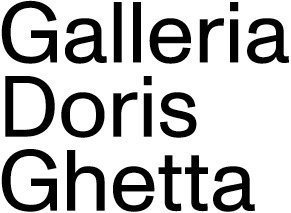VOLTA 13, BASEL 2017
Leonardo Silaghi (born 1987 in Romania)
Silaghi‘s artistic practice is based on an excellent academic education and transformed remarkably during the past years, turning from models of Eastern-European tradition to topics of Western painting. All his subjects and issues are dealt with in the medium of painting, that Silaghi researches closely. He has high standards, executing them with excellent technical skills. Nonetheless the artist retains a great easiness and dynamic inside the medium. Figuration and abstraction are all part of Silaghi‘s repertoire as much as the dealing with color and the concentration and reduction of the pallet to hues of grey, a characteristic of his painting. Silaghi is a promising young artist, with an interesting development and a consistent painting practice.medium can be measured in every detail transformed into a gentle and contemporary language.
Peter Sandbichler (born 1964 in Austria)
The gesture of folding, a simple interference with an existing material to change its appearance and function, also originates the ‘Alte Schachtel’ sequence. Actual cardboard boxes are dented until they have an appealing form and then grouted with fiberglass-enforced acrylic resin to turn out as the durable cast of an ephemeral object at the end of its usefulness.
Teodora Axente ( born 1984 in Romania)
Teodora Axente belongs to the younger generation of the Fabrica de Pensule in Cluj, Romania, an artist community in an old brush factory that became a cultural center over the last years. Narration is the focus of Teodora Axente’s expressive development. Her subjects, set in scenes built for the purpose by the artist, play at being manikins out of desire, playful sociability, vanity, compositional requirements and moral freedom. In the artist’s words: «…human effort, of the mind and of the soul, inhabits the boundary between negation and affirmation, between the soul and the body, the good and the bad, the eternal and the mortal.»
Pavel Grosu (born 1991 in the Republic of Moldovia)
"The term “School of Cluj” is being used, with various meanings and tones, in various international art circles, largely referring to a certain approach to painting, characterized prominently by an option for the figurative, evocative register, a preference for vague historical or social references and an emphasis on the technical quality of the works, seen first and foremost as aesthetic objects.", writes curator Iacob Bogdan in one of his texts on Pavel Grosu. The figurative paintings of Grosu often seem surrealist in their combination of elements. A man seems to drown knee deep in a swamp that turns out to be a tennis court. A spoon lets honey glide down on a partial nude that resembles Courbet's "The Origin of the World" (1866). Or Duchamp's "Etant Donné" (1946-66) since the body seems to be lying on a meadow. Despite their colorful palette the paintings often have a latent atmosphere of doomsday.
VOLTA 13 BASEL
Markthalle, Viaduktstrasse 10, Basel
http://voltashow.com/about/



